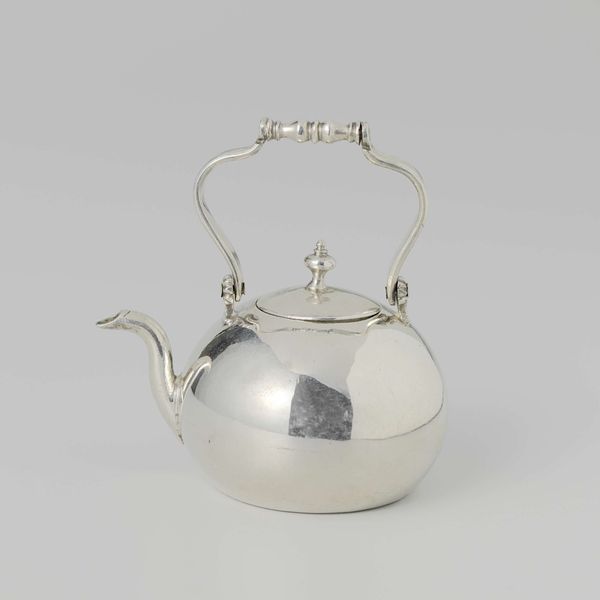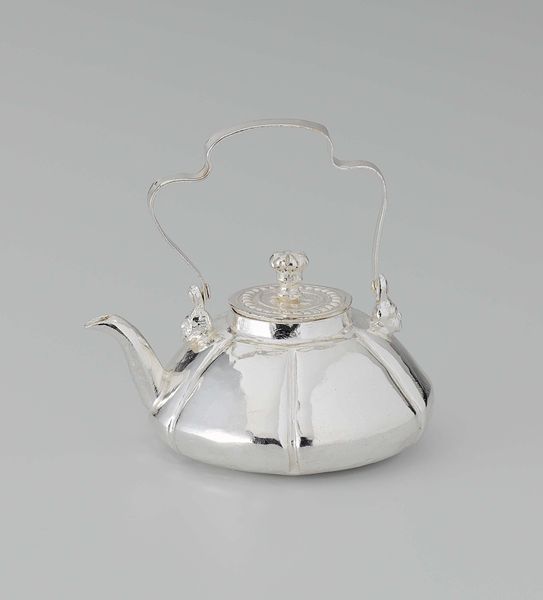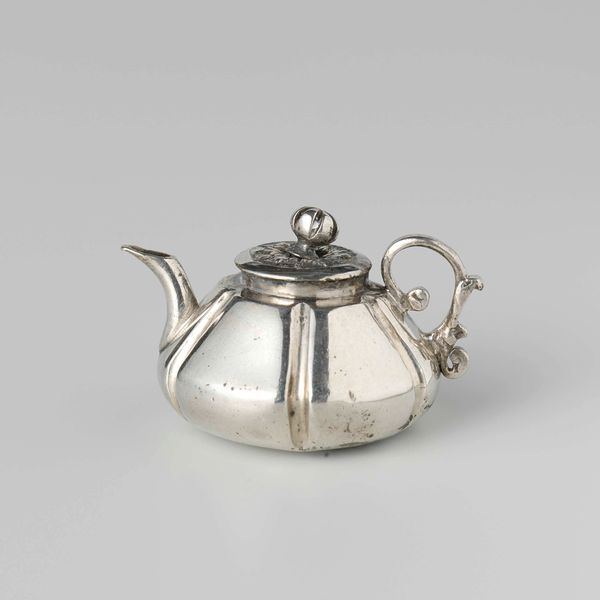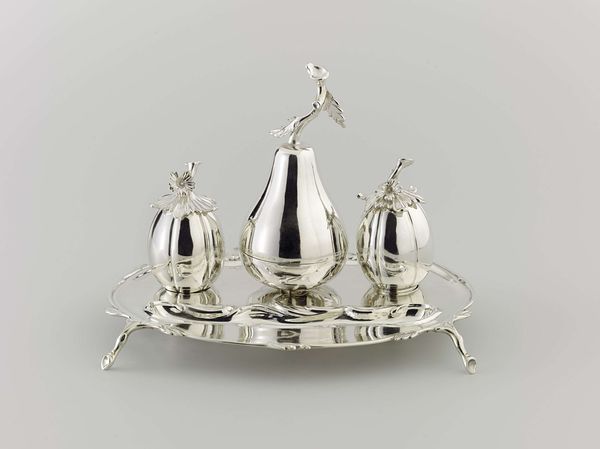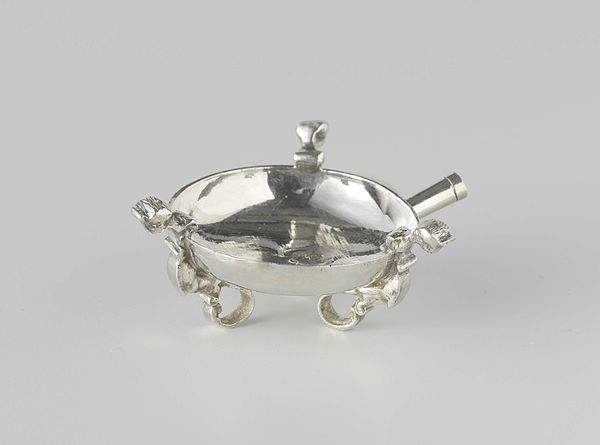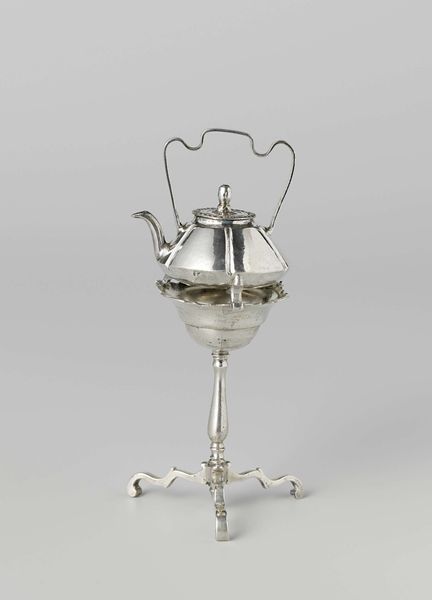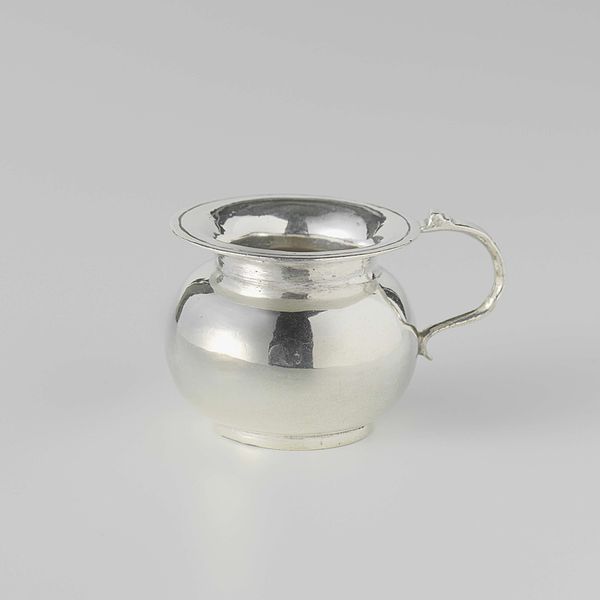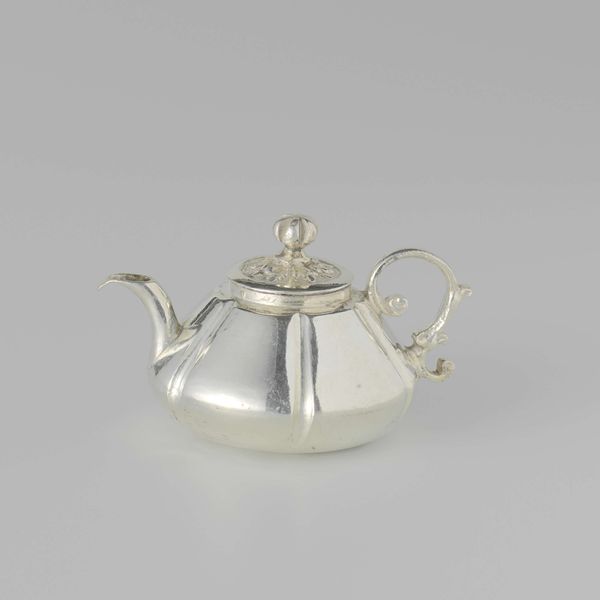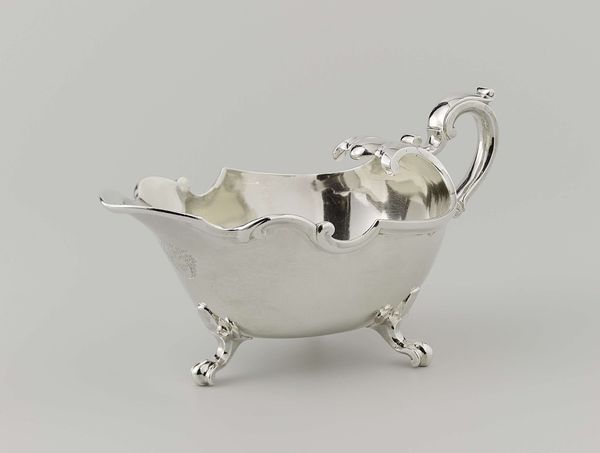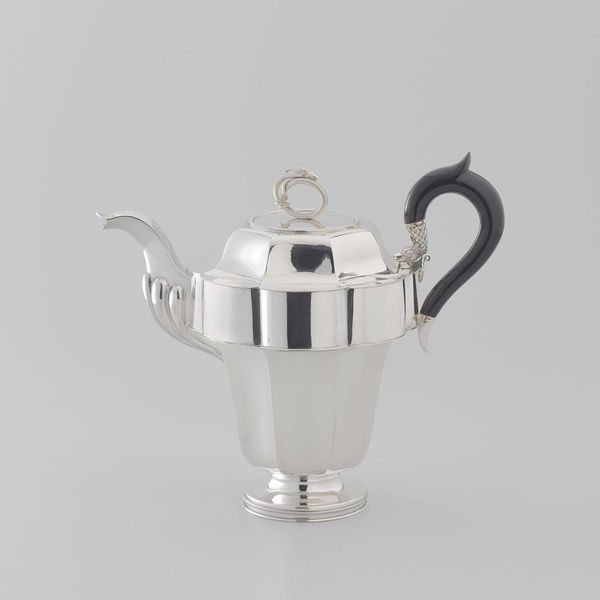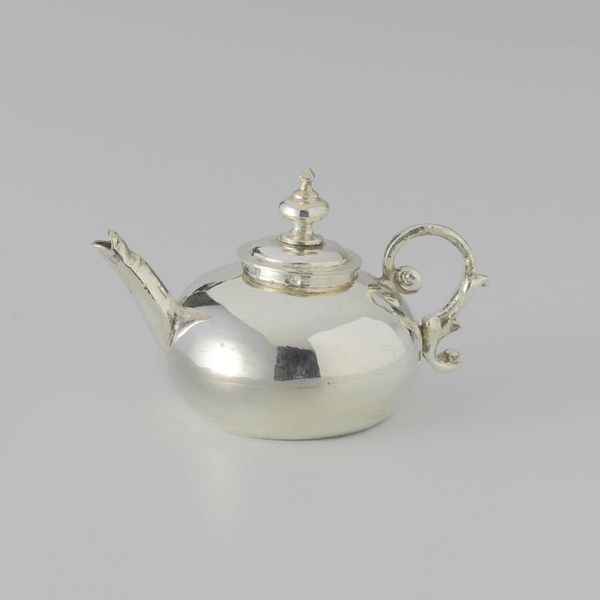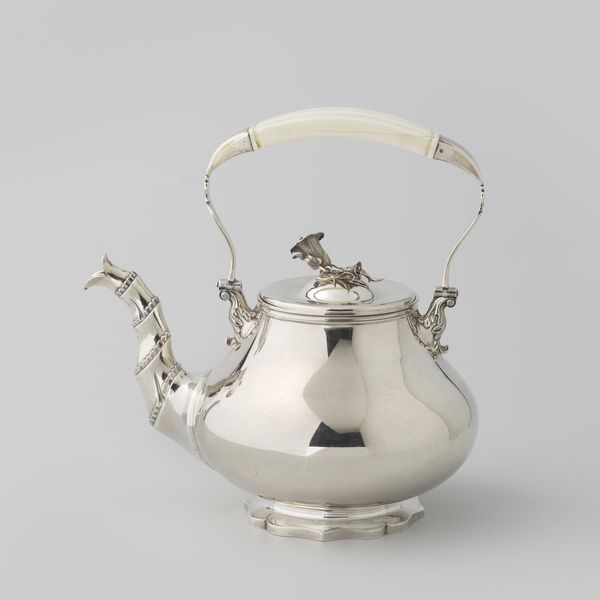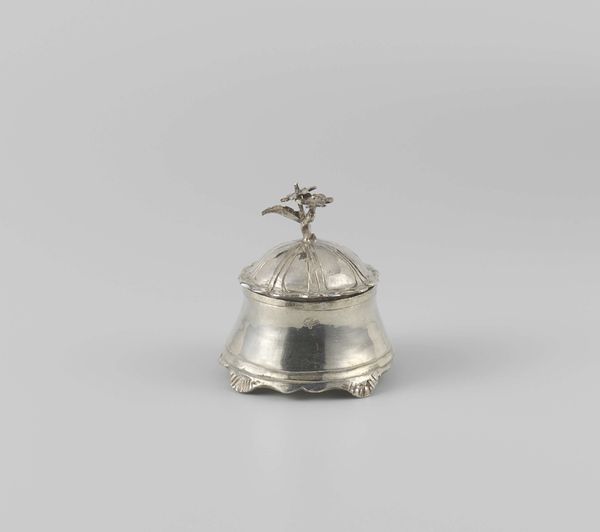
silver, metal
#
silver
#
baroque
#
metal
Dimensions: height 6.0 cm, diameter 4.9 cm, weight 36 gr
Copyright: Rijks Museum: Open Domain
Editor: Here we have a petite silver kettle, likely crafted between 1718 and 1734 by Abraham Effemans. Its Baroque style is clear, but what strikes me most is how the simple geometry contrasts with the elaborate handle. What aspects of its form do you find most compelling? Curator: The piece presents a fascinating study in material and form. Notice how Effemans utilizes the reflective quality of silver to emphasize the clean lines of the kettle's body. The vertical facets create a play of light and shadow, drawing the eye upwards. It is less about decoration and more about manipulating the material to explore volume and light. Editor: So, it's about how the silver itself shapes our perception? Curator: Precisely. The handle, with its curvilinear design, offers a deliberate counterpoint. Its openness invites the surrounding space to interact with the object, adding a layer of complexity. Observe how the silversmith controls the overall effect. Editor: The relationship between straight lines and curves does give it a dynamic quality. But do you think the relatively small size is relevant here? Curator: Size is indeed crucial. It transforms a functional object into a precious, almost sculptural one. It compels a close inspection, inviting us to appreciate the meticulous craftsmanship and the considered relationship between its parts. It is a masterful study of Baroque principles reduced to their most essential forms. Editor: I see it now – it's the contrast between the object's functionality and its artful presentation that’s so compelling! Curator: A useful tension to explore and one which, I would add, reflects an era concerned with the status of luxury objects.
Comments
No comments
Be the first to comment and join the conversation on the ultimate creative platform.
